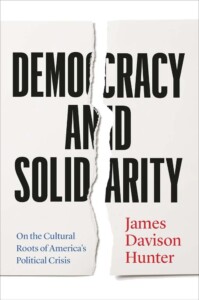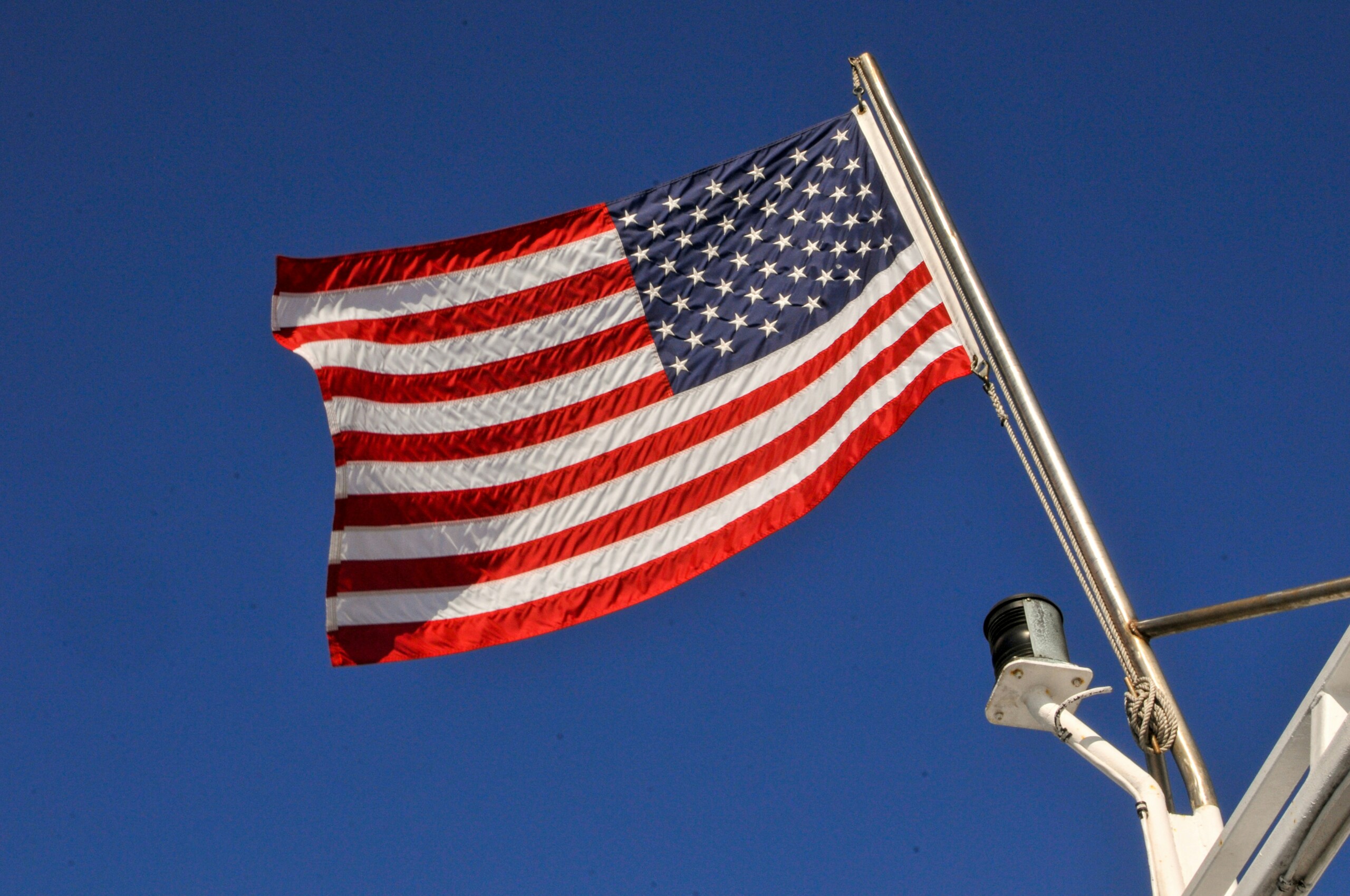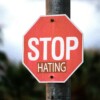
Democracy and Solidarity: On the Cultural Roots of America’s Political Crisis.
Hunter’s overall point is well taken, though: new efforts at undergirding democracy became more focused on reason (internally derived ideas) or on natural law (externally derived absolutes), and less so an amalgamation of the two, feeding eventually into a culture war. For instance, John Dewey had great faith in our capacity to reason our way to democracy and saw secular public education as a key means to further it. Fellow progressive and theologian Reinhold Niebuhr (someone claimed by both the right and the left) also wanted to solidify our foundations but called out Dewey for his utopian idealism and naivete about human nature and our capacities. Niebuhr emphasized original sin and the tendencies and power of institutions (collective sin), thus the need for power to check power. Yet Niebuhr also called out fundamentalists for withdrawing and not meeting the needs of the day, addressing racial injustice, etc. Altogether, Niebuhr contended that we needed the life-giving prophetic myths of Christianity and Judaism to counter myths of fascism and communism and break cycles of injustice; and to recognize that we are all capable of sin, that we are worthy because we’re made in God’s image, and that we are all called to forgive (166–167). I’d also add, Niebuhr took on the important role of making it clear why alternatives to democracy are costly. Democracies need to check other states and check themselves and their own tendencies toward evil within. As Niebuhr suggests, we choose democracy because of human nature, recognizing what could more readily follow without it, as subsequent iterations of autocrats or kings tend to be worse than the first (e.g. Maduro’s regime after that of Chávez in Venezuela).
By the mid-1900s, some conservative Christians began to re-engage as evangelicals, under the new National Association of Evangelicals, Christianity Today, etc. seeking “cooperation without compromise,” led by Billy Graham and others.
Many not included in the system pushed back in serious ways, famously represented by the Civil Rights Movement led by the Black church and Reverend Martin Luther King Jr. Unlike reform movements of the twentieth century that had dropped religious framing, the Civil Rights movement leaned on religion and external absolutes, e.g., that we are all God’s children. King pushed America to live up to its promises, its creeds, and thus be healed. He was “calling America to heed its better angels,” to love our enemies, as he did, calling out the sin/evil, loving the sinner/evildoer (200).
The 1960s were a time of great change, due in part to more significant and more diverse migration after the Immigration and Nationality Act of 1965 (from 9.6 million in 1965 to 44.8 million in 2018). It helped bring about more religious, racial, and ethnic diversity in the United States, including those unfamiliar with HE thinking. This was accompanied by a decline in civil religion and a growing distaste for the American project, given America’s roles in direct conflict, proxy wars, and its troubled domestic record. And with the end of Cold War, and the loss of an external enemy, internal divides got even hotter.
By the 2000s, class concerns appeared to be left behind by the left as it shifted toward a focus on identity. Donald Trump astutely has picked up on “class and cultural resentments” to usher his way into power, not once but twice (236). And many working class and/or religious adherents, feeling left behind, labeled as deplorable, are drawn into the Trump orbit, not by one making an explicit appeal to their faith but rather to their economic and cultural concerns. They too, then, increasingly see themselves as victims, defined by their identities (243–245).
The “MeToo” and Black Lives Matter movements rise to the fore, but gender and race and other identity issues are pitched by some in a way that make perpetrators irredeemable. Hunter notes Arthur Schlesinger’s worries that things are being framed in a way that “belittles unum and glorifies pluribus” (241). Identity movements on the right and left operate primarily without religious founding (and thus, I’d argue, without the tempering that comes with religious calls to forgive and heal). Both sides go extreme in their efforts to make clear who is in and who is out via cancelling and boundary work that excludes those who deviate (244).
Hunter worries about our fundamental loss of mutual respect for other humans, watching people consumed with rage and hatred toward others. He warns us not to give up on hearing dissenting arguments because we see only “repugnant cultural others” beyond reach and see engagement as a betrayal to our side. While reading this text, I was listening to the 2004 song, “Roll to the Middle,” by Sara Groves. It is a song about marriage, but it seems relevant here. She sings of a couple who fights and argues, “we shot at each other till we lost ammunition,” then at night got back into bed and “roll[ed] to the middle.” It seems like we need to do so today. We’ve been fighting with a vengeance, but ultimately, the nation and its people are a family of sorts. Will we roll back to the middle, before the sun goes down on our anger?
As a point of encouragement, helpful here would be reference to many centrist religious groups rolling to the middle, not giving up, doing difficult bridging work on some of these very issues (e.g. Center for Public Justice, Evangelical Immigration Table, Fairness for All, Christians for Biblical Equality, Templeton Religion Trust’s Covenantal Pluralism Initiative). Their work has its limits, but groups like these are trying to generate the solidarity and cooperation Hunter sees as slipping away in this time of greater division. He may find their mission chimeric, but it would be useful to address them.
In one of his later chapters, Hunter does open with the encouraging recognition that close to home, with friends and family, Americans may be experiencing ongoing kindnesses at a fundamental level. A means of solidarity has persisted, and even local governance (at least some of it), has remained focused on addressing shared concerns. Thereafter he does list a number of civic organizations doing the difficult needed work of bringing people together (298) (to which I would add religious ones like Neighborly Faith or Eboo Patel’s Interfaith America, as well as those listed above). However, Hunter sees scant evidence of this at the national level. Rather, both sides see expansion of state power and increasingly authoritarian moves as necessary to enforce their progressive or conservative conceptions of the common good.
Could civil war follow? Of note, post-Cold War, terroristic attacks from those on the extreme right have been most prevalent, but more recently, attacks have been on the rise on the far right and the far left (the latter accounting for 40% of domestic terrorist acts between 2020–2022). A 2020 Stanford study found that one third of Democrats and Republicans believe “violence could be justified to advance their party’s goals” (362). This may not lead to outright conflict, but it lays the ground for such.
Hunter does hold onto hope, however. He notes that there will be disappointed hopes but, as Martin Luther King Jr. wrote, “[W]e must continue to move on. On the one hand we must accept the finite disappointment, but in spite of this we must maintain the infinite hope. This is the only way that we will be able to live without the fatigue of bitterness and the drain of resentment” (quoted on 376).
Holding on to these ideals is not to make us utopian, Hunter argues, but rather pragmatic, honest about our current context, with “a realistic picture toward which individual effort, collective action, and institutional life can be oriented” (377). So, he turns back to a progressive realist of sorts, Niebuhr, and expands on his ideas: forgoing violence, condemning systems rather than people, reconstituting a notion of humanism, depoliticizing non-political institutions, engaging in civic formation, and cultivating leaders with a vision of the common good and the courage to persist in it and actually work through differences. He calls for a vital center capable of fighting the nihilism of our day.
Hunter’s Democracy and Solidarity is a timely and important book, but it is best read in conjunction with the broader literature on democracy, which looks not only to culture but to an array of factors (recall that many of the nations adopting and thriving under democracy were once presumed incapable of doing so culturally). There is a substantial array of scholars who have been thinking comparatively for years about democratization and democratic consolidation, its progress and regress (Guillermo O’Donnell, Terry Lynn Karl, Larry Diamond, Scott Mainwaring, Jared Diamond, and Samuel Huntington, to name a few). To look to our past to understand our present is key, but to look all around us can be enlightening as well.























